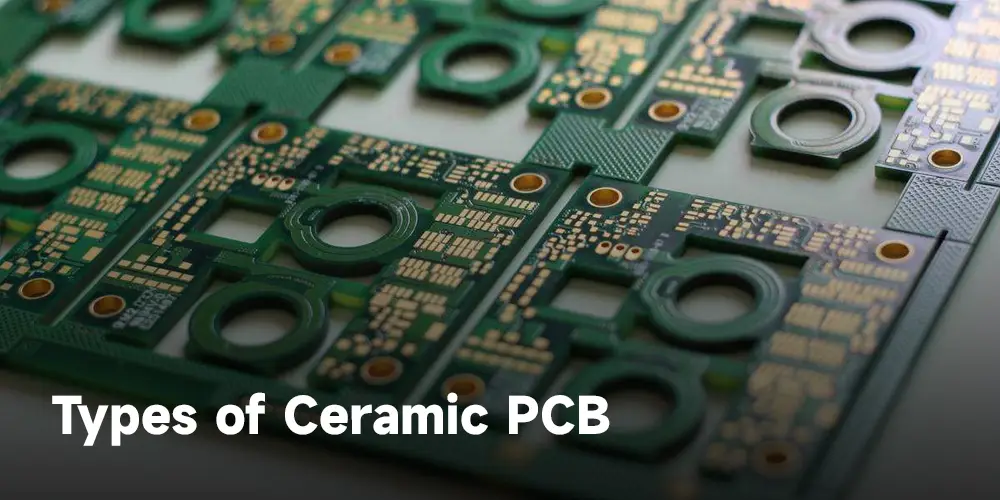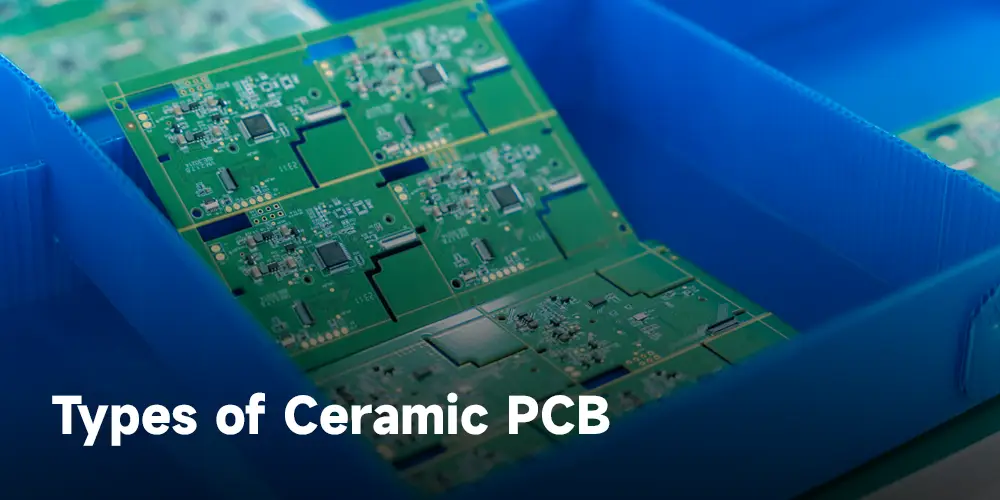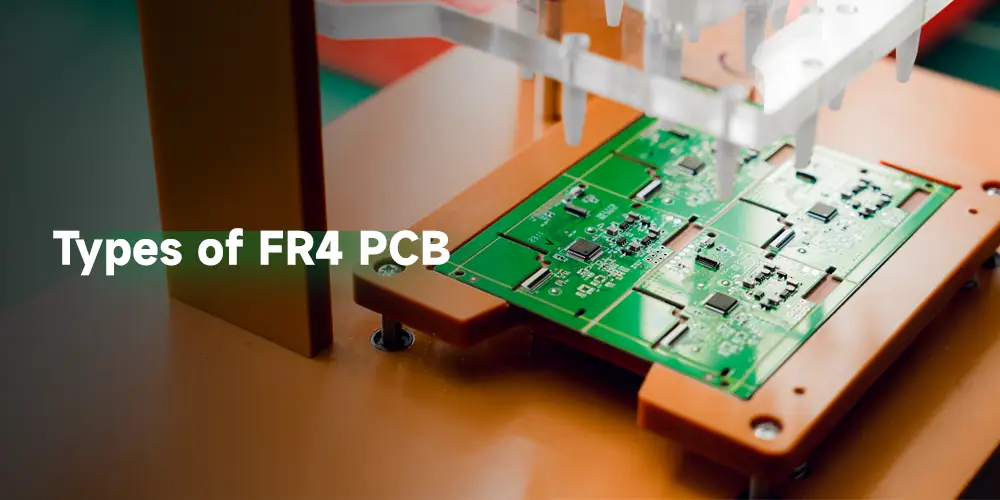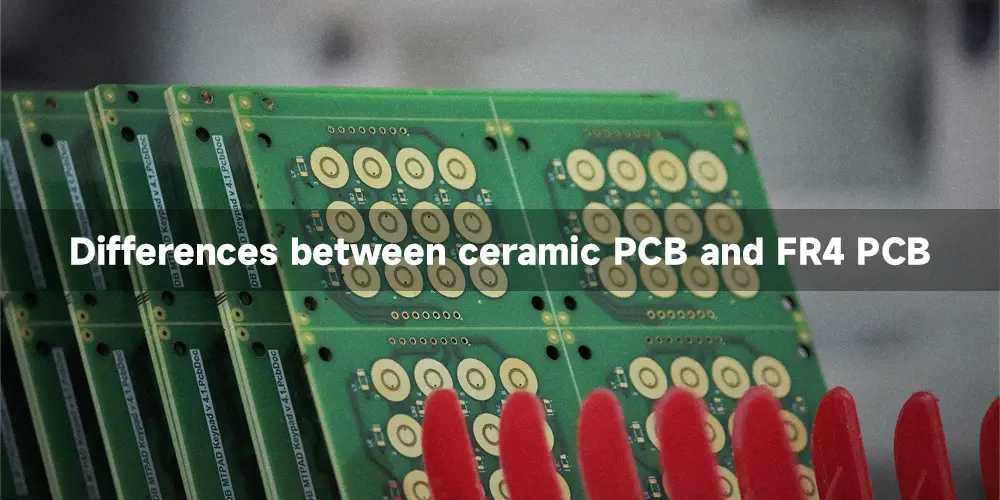PCB ceramic substrate and FR4 substrate are currently more commonly used boards, FR4 substrate is widely used, low cost, PCB ceramic substrate application is relatively high-end, high cost. Today’s article will explain the difference between ceramic PCB and FR4 PCB from the aspects of definition, classification and application energy.
Introduction of ceramic PCB and PCB

Ceramic PCB: It is a circuit board based on ceramic materials, which can also be called ceramic PCB (Printed Circuit Board). Unlike common glass fiber reinforced plastic (FR-4) substrates, ceramic PCB use ceramic substrates that can provide higher temperature stability, better mechanical strength, better dielectric properties and longer life. Ceramic PCBs are mainly used in high-temperature, high-frequency and high-power circuits, such as LED lamps, power amplifiers, semiconductor lasers, RF transceivers, sensors and microwave devices.
PCB: It is a basic material for electronic components, also known as circuit board, PCB board (Printed Circuit Board). It is a carrier that prints metal circuit patterns on non-conductive substrates, and then fabricates conductive paths and assembles electronic components through chemical corrosion, electrolytic copper, drilling and other processes.
Types and application of ceramic PCB and FR4 pcb
Ceramic PCB

Divided by material:
● Alumina ceramic (Al2O3): Excellent insulation, high temperature stability, hardness and mechanical strength for high power electronic devices.
● Aluminum nitride ceramics (AlN): It has high thermal conductivity and good thermal stability, suitable for high power electronic equipment and LED lighting and other fields.
● Zirconia ceramic (ZrO2): It has high strength, hardness and anti-wear properties, and is suitable for high-voltage electrical equipment.
Divided by process:
● HTCC (High Temperature Co-fired Ceramics): suitable for high temperature and high power applications, such as power electronics, aerospace, satellite communications, optical communications, medical equipment, automotive electronics, petrochemical and other industries. Product examples include high-power LEDs, power amplifiers, inductors, sensors, energy storage capacitors, and more.
● LTCC (low-temperature co-fired ceramics): suitable for the manufacture of microwave devices such as radio frequency, microwave, antenna, sensor, filter, power divider, etc. In addition, it can also be used in medical, automotive, aerospace, communications, electronics and other fields. Product examples include microwave modules, antenna modules, pressure sensors, gas sensors, accelerometers, microwave filters, power dividers, etc.
● DBC (straight copper ceramic): suitable for heat dissipation of high-power power semiconductor devices (such as IGBT, MOSFET, GaN, SiC, etc.), with excellent thermal conductivity and mechanical strength. Product examples include power modules, power electronics, electric vehicle controllers, and more.
● DPC (straight copper multilayer printed circuit board): mainly used for heat dissipation of high-power LED lamps, with high strength, high thermal conductivity and high electrical performance. Product examples include LED lights, UV LED, COB LED, etc.
● LAM (Hybrid Ceramic Metal Shef): Can be used for heat dissipation and electrical performance optimization in high-power LED lamps, power modules, electric vehicles, and other fields. Product examples include LED lights, power modules, electric vehicle motor drivers, and more.
FR4 PCB

IC carrier board, rigid-flex PCB and HDI PCB are all commonly used PCB types, which are used in different industries and products, as follows:
● IC carrier board: IC carrier board is a commonly used printed circuit board, mainly used for chip testing and production in electronic devices. Common application industries include semiconductor production, electronics manufacturing, aerospace, military and other fields.
● Rigid-flex board: Rigid-flex board is a composite board that combines a flexible circuit board with a rigid circuit board, which has the advantages of flexible and rigid circuit boards. Common application industries include consumer electronics, medical equipment, automotive electronics, aerospace and other fields.
● HDI PCB: The HDI PCB Board is a high-density interconnect printed circuit board with higher line density and smaller aperture for smaller packages and higher performance. Common application industries include mobile communications, computers, consumer electronics and other fields.
Differences between ceramic PCB and FR4 PCB

FR4 PCB has different thermal conductivity than ceramic substrates
Ceramic PCB uses ceramic substrate, that is, the medium is ceramic material, including alumina ceramic base, aluminum nitride ceramic base, silicon nitride ceramic base and other ceramic substrates. The thermal conductivity of ceramic substrates varies from 25W~230W, and the thermal conductivity of different ceramic media is different:
The thermal conductivity of alumina ceramic substrate is 25W~30W
The thermal conductivity of aluminum nitride ceramic substrate is above 170W
The thermal conductivity of silicon nitride ceramic substrate is 80W~90W.
Then FR4 PCB has a thermal conductivity of less than 3W, which is a big gap compared with ceramic substrates, especially in product areas that require high heat dissipation requirements, and ceramic substrates have become a very popular dielectric material.
Ceramic substrates have different insulation properties than PCB boards
The ceramic substrate is generally the structure of the circuit layer – ceramic base – circuit layer, and the insulation of the ceramic substrate is very good, and there is no need to add an insulation layer. The PCB board needs to add an insulation layer to play a mobile insulation role, but the insulation effect is far less than that of the ceramic substrate.
The thermal structure of ceramic substrates is different from that of FR4 PCBs
The heat dissipation structure of the ceramic substrate is the structure of the circuit layer – ceramic base – circuit board layer, because there is no insulation layer in the middle, the heat of the components is directly transferred from the ceramic base to the circuit layer and dissipated out, the heat dissipation is fast, and the effect is good.
The heat of the PCB board needs to be dissipated from the dielectric layer-insulation layer-line layer. PCB is separated by an insulating layer, and the thermal conductivity of the dielectric layer itself is poor, although the thermal conductive glue is added, but the thermal conductivity effect is still not improved, often can not achieve the purpose of rapid heat dissipation of the device, especially some high-power devices. For products with large heat dissipation and temperature changes, a ceramic substrate is required as a heat dissipation substrate.
Ceramic substrates have different application areas than FR4 PCBs
Ceramic SUBSTRATE and FR4 PCB applications are different, mainly the performance of the two is different, ceramic PCBs are mostly used in high thermal conductivity, high heat dissipation, high insulation, product fields; FR4 PCBs are used in some more widely used products with less stringent requirements for heat dissipation and insulation.
Ceramic substrates are priced differently from FR4 PCBs
The material and performance of ceramic PCB and PCB boards are different, and the price of them is ultimately determined, and the substrate of ceramic PCB are very high, and the production cost is high. A PCB board prototyping is estimated to be several hundred yuan, and a ceramic substrate needs several thousand yuan.











